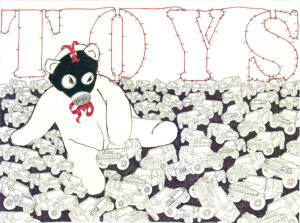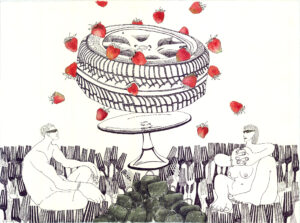How Does a “Subject” Present Itself to the Artist: River of Life TO Altered Terrain
Part I
“Ideas may be buried and surface slowly in pieces…Or they may burst out fully formed—and scare the daylights out of you.” –author, Ian Roberts
In these words Roberts describes how I found my what to the topic Altered Terrain, a subject which I explored for such a long time. Buried within, the first hint or prelude was a Round River series of drawings. They are about components of life on this planet Earth and how they form or “run through” humankind. Part of each drawing is a human figure as in the images below left: The River of Life Runs Through Me: Water. Writing names of endangered species form part of the torso—a chant, prayer or poem appreciating all living water beings. Likewise, The River of Life Runs Through Me: Endangered Species sings of those creatures who are in danger of being erased from our living planet.
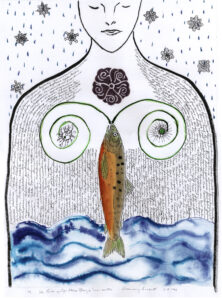
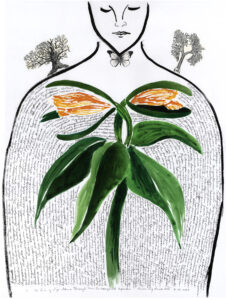
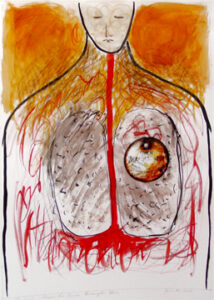
Writing is how I came to understand how visual arts and poetry can merge together in one image. How the coupling teaches me about what I am imaging. How each piece pointed to another, and then another. Finally, The River of Poison Runs Through Me burst out fully formed and spawned so many Altered Terrain expressions over the years. In this series and the next I was exploring special papers, ink graphite transfer, and acrylic
Part II
Describing the terrain being altered by humanity is a big subject that surfaced slowly as one drawing led to another–as I read Moby Duck by Donovan Hohn, The Unexpected Universe by Loren Eisley, The Attentive Heart by Stephanie Kaza, and Round River by Aldo Leopold. I studied Running the Numbers: An American Self Portrait photographs by Chris Jordon. I allowed myself to explore special papers, inks acrylic, and collage. I carried the human torso from The River of Life images into the new, larger 22 x 30 inch format, and chose a language of rubber duckies, forks, machine parts, amphibians, birds, bones, maps, teddy bears, and metaphors as elements of my compositions. First, limiting myself to horizontal designs and then vertical ones.
The Altered Terrain images are especially challenging as they do not present solutions to the problems posed by humanities numbers and negative impact upon the planet. While the ideas kept leaping out and scaring me into action, they also jolt viewers. Nonetheless, I was compelled to mine the topic as long as the ideas presented themselves.
I was asked recently, “How do I avoid becoming depressed while working on these images?” The biology teacher in me compels me to keep working on the topic and to enliven some of them with humor and sarcasm. Once I begin a work, I am concerned technical issues. I ask myself how can I make an interesting composition within the parameters of the paper? What will the ink do if I apply it in layers using both pen scribbles and washes? What if I exaggerate one part of the design? Can I make use of arbitrary or conflicting components?
“True art is in the doing,” said French artist Jean Renoir. In the doing of Altered Terrain imagery, I find a measure of peace not tarnished by the negative ramifications exposed by the drawings themselves.
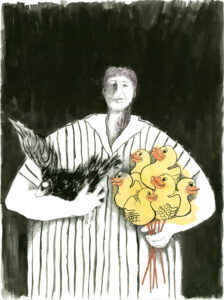
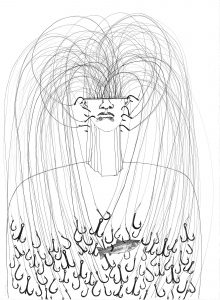
Similarly, Robert Houle, a contemporary artist from Sandy Bay First Nation in Manitoba, Canada, has confronted this issue. While physically and emotionally abused at his community’s Catholic mission run residential school, he found that those deep wounds could be reconciled and even healed through making art. He identifies with pahgedenaun, a Saulteaux term meaning “to let it go” from one’s mind. “Beauty is a way of tempering a narrative that could be a victimizing,” reflected curator Nanibush on the power of his painting “Sandy Bay.”
While Houle’s work is very abstract, my works rely on surreal juxtapositions of seemingly unrelated objects to explore relationships between humans and other living creatures. My compositions reveal a reality that goes beyond the natural world as we ordinarily perceive it, through atypical juxtapositions of its various elements. The fun is in trying out unusual combinations of forms and solving the mysteries of the links between them. The frosting on the cake are the reflective poems I often pair with images.
